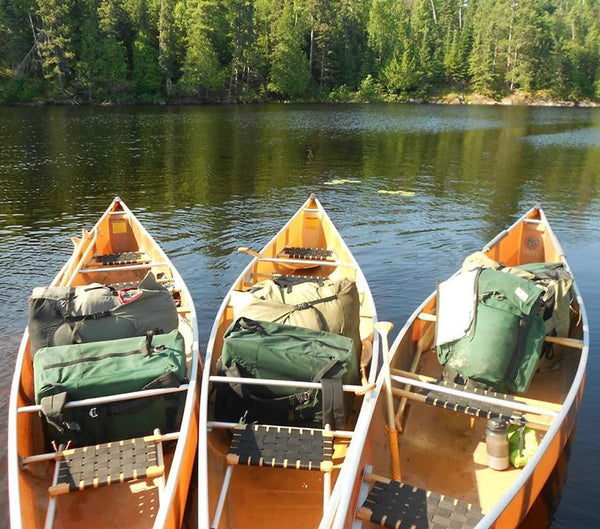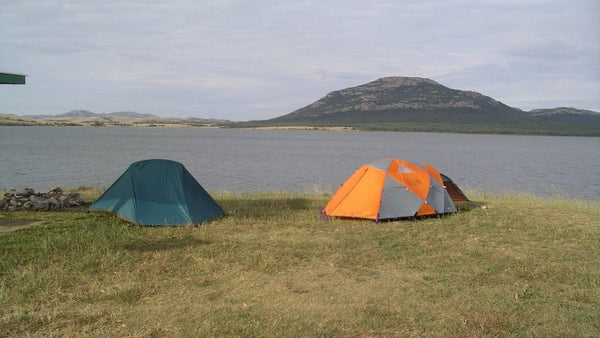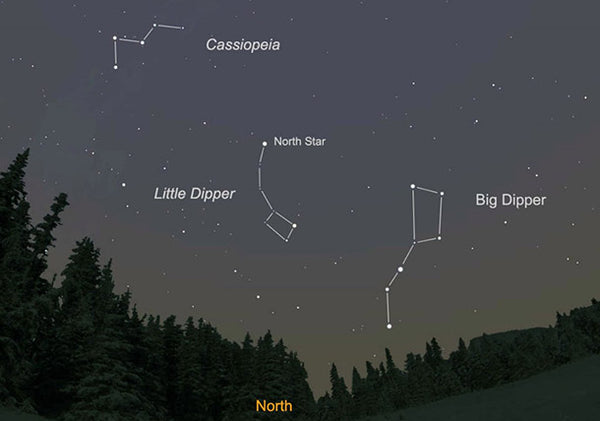8 CAMPING HACKS FOR COOL WEATHER CAMPING
Summer may get all the attention when it comes to camping, but who says it has to be confined to a few months out of the year? Even when the temperatures get chilly, like it does in most parts of the U.S., there are still plenty of ways to camp and stay warm well into fall and even winter. Here are some fail-safe tips for making the most out of cool weather camping.
1. COME PREPARED
It all starts before you even head out the door. Naturally, that means double-checking weather conditions and temperatures as close to your departure time as possible and always err on the side of caution by packing more layers than you think you may need. Camping in colder weather is one situation where you’re definitely better safe than sorry. For additional insight, email or call the campground ahead of time to get direct intel on what the forecast is like at your destination.
2. LAYER UP
Whether you’re camping in a tent or a cabin, it’s important to dress in layers when you’re in the elements. Start with bottom-layer basics like thick socks, foot-warmers and shirts and under-garments made of wool or polyester to help keep your skin dry. From here, add on heavier attire that’ll insulate and hold onto heat, like fleece jackets and pants, followed by outer ware like water-proof coats, pants, and boots. Hats, gloves, and ear-warmers are good ideas, too.
3. DON’T FORGET THE SUNSCREEN
Just because it’s not beach season anymore doesn’t mean you don’t need sunscreen. Quite the opposite in fact, even through clouds, the sun is beating down (and potentially even reflecting back at you from the ice and snow), so wearing a layer of sunscreen is vital. Sunglasses or goggles are a good idea too.
4. BE AWARE OF TIME
One thing to keep in mind when planning is the shorter daylight hours during the colder months. An important part of the planning process involves mapping out your daily activities to see how far away trails are and how long it’ll take you. Make sure and arrive at your campsite with ample time to unpack and set everything up. Whether you’re in a tent, a cabin or a camper, you don’t want to be making trips in and out of the car in the dark.
5. THINK THERMAL
From thermal coats and jackets to snug sleeping bags, it’s amazing what thermal equipment can do. Made with proper insulation and deeply snug, this stuff can ward off even the fiercest forecast. While not cheap, thermal sleeping bags and jackets are sound investments, especially if you plan on sleeping in a tent in a cool climate. Both items provide soothing comfort even in the face of frigid temperatures, allowing you to sleep soundly and hike outside without your teeth chattering. Lay your sleeping bag out on a sleeping pad for extra insulation and comfort.
6. GET THE BEST EQUIPMENT
Camping in a tent in cool weather is certainly feasible with the right goods. Unlike summer camping, where you can keep things light with any type of tent, this time of year necessitates a heartier style specifically designed to retain heat and keep cold out. Look for one with a double-layer door and siding, and ideally one that’s water-proof and shaped in such a way so that wind can blow right by it. With tent in tow, pitch it in a location that’s as protected from the wind as possible, and in a spot where the sun can hit as soon as it rises.
7. STOCK UP ON COMFORT FOOD (AND WATER)
More so than any other time of year, the wintry months are an apt time for hearty comfort food, and not just because of the holiday dinner table. When camping, it’s pivotal to load up on calorie-rich food (the hotter the better) and drink plenty of water; this helps the body stay warm and regulate its temp. Specifically, plan filling breakfasts and dinners—oatmeal and stews are great ideas, cooked over a campfire or a backpacking stove—and keep healthy snacks available throughout the day. When hiking, bring a water bottle that’s insulated by a foam sleeve or some kind of layer to keep it warm and prevent it from getting icy.
8. KEEP ELECTRONICS WARM
The last thing you want when you’re camping, hiking or skiing this time of year is a dead phone. Cold temperatures can kill a battery quickly, so be sure and keep electronics warm, by stowing in sleeping bags or in pockets under your coat. Beforehand, get everything fully charged, and the newer the battery, the better.
Do you have any winter camping tips? If so share them with us in the comments.
Leave a comment
Comments will be approved before showing up.
Also in News & Skills




Richard White II
Author